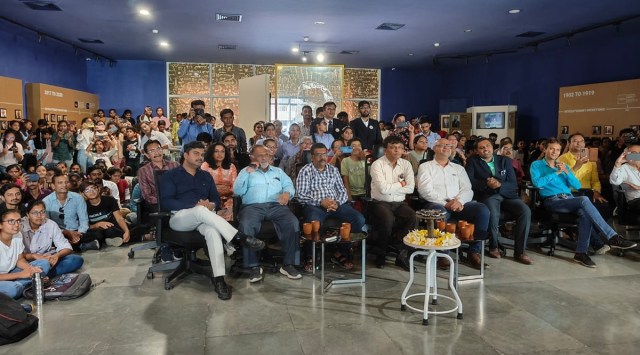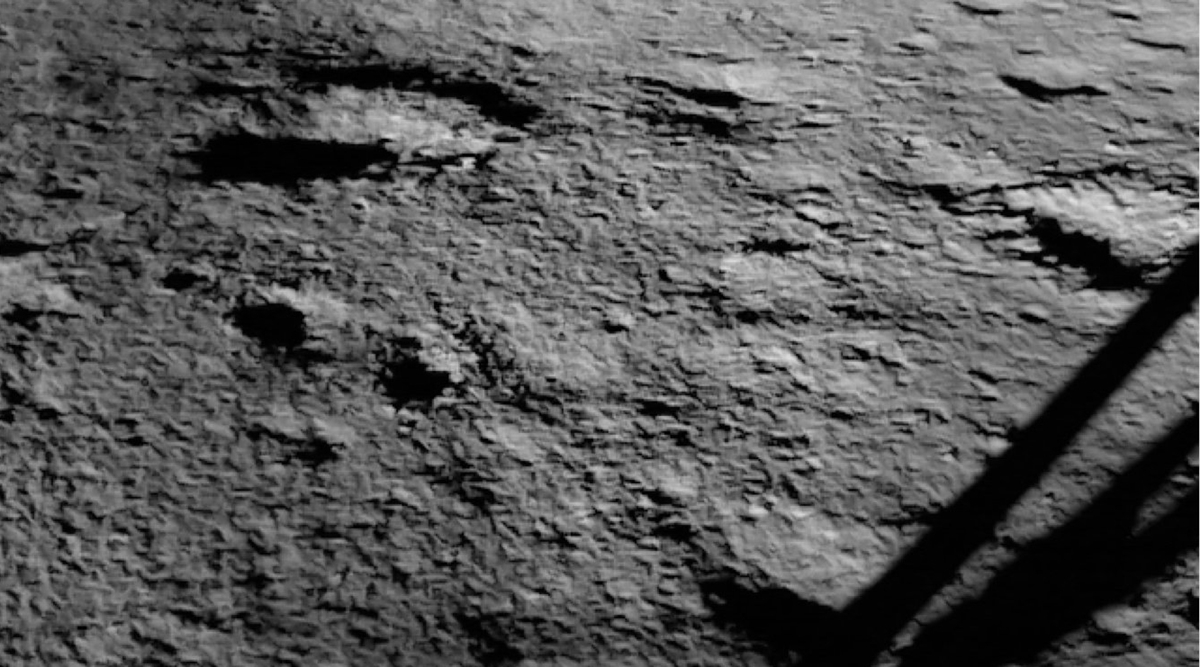Chandrayaan-3: Stamp of labs founded by Vikram Sarabhai in Lander eyes, rover’s curiosity
ISRO SAC played a crucial role in the landing process. It has developed a number of sensors on board the lander, including the hazard detection and avoidance camera and processing algorithm.
 Watching the landing in Rajkot. (Express Photo)
Watching the landing in Rajkot. (Express Photo) The Space Applications Centre (SAC) of ISRO and Physical Research Laboratory (PRL) have made crucial contributions to the Chandrayaan-3 mission, which landed close to the unexplored lunar south pole on Wednesday evening. Both institutions were founded in Ahmedabad by Dr Vikram Sarabhai, father of India’s space programme.
ISRO SAC played a crucial role in the landing process. It has developed a number of sensors on board the lander, including the hazard detection and avoidance camera and processing algorithm.
SAC has developed eight camera systems for the Chandrayaan-3 mission, four of which are on board the lander, and one on the rover. Three other cameras on the lander played a crucial role in the landing.
 An ISRO image of the Chandrayaan-3 landing site taken after touchdown. One of the four legs of the lander is visible on the right
An ISRO image of the Chandrayaan-3 landing site taken after touchdown. One of the four legs of the lander is visible on the right
ISRO SAC director Nilesh Desai told The Indian Express, “the Lander Position Detection Camera (LPDC) will give the lander position while it is coming down, giving us the details of longitude and latitude during the 30-kilometre descent to the lunar ground. The other two cameras … will take pictures in real time while it is landing and correlate with stored images to find out if the landing is taking at the right place and adjust the track of the lander accordingly, so that it lands on the decided landing site.”
The mission is carrying two scientific payloads from the Physical Research Laboratory, Ahmedabad. There is the rover payload called Alpha Particle X-ray Spectrometer, and the lander payload called Chandra’s Surface Thermophysical Experiment (ChasTE). Both payloads were part of the Chandrayaan-2 mission as well, but could not be utilised owing to the soft landing failure which resulted in the loss of the lander and rover and the associated five payloads.
PRL director Anil Bhardwaj told The Indian Express that the two payloads had been under development from around 2014-15. The Alpha Particle X-ray Spectrometer will provide on-site elemental and chemical composition of lunar soil and rocks. “This will help us understand the distribution of various elements on the lunar surface, a few metres apart, because the rover will stop, take measurements and repeat the process,” Bhardwaj said.







